Forums
- Forums
- Axis And Allies Forum
- General Discussion
- Aviation News
Aviation News
Post a reply
- Go to Previous topic
- Go to Next topic
- Go to Welcome
- Go to Introduce Yourself
- Go to General Discussion
- Go to Screenshots, Images and Videos
- Go to Off topic
- Go to Works in Progress
- Go to Skinning Tips / Tutorials
- Go to Skin Requests
- Go to IJAAF Library
- Go to Luftwaffe Library
- Go to RAF Library
- Go to USAAF / USN Library
- Go to Misc Library
- Go to The Ops Room
- Go to Made in Germany
- Go to Campaigns and Missions
- Go to Works in Progress
- Go to Juri's Air-Raid Shelter
- Go to Campaigns and Missions
- Go to Works in Progress
- Go to Skinpacks
- Go to External Projects Discussion
- Go to Books & Resources
-
 Main Admin
Main Admin -
 Main AdminRAF Valley based 208(R) Squadron have unveiled a brand new Hawk TMk1 livery to commemorate their 100th Anniversary. The fin, featuring the squadron?s distinctive yellow and blue colour scheme, draws on a number of ideas submitted by squadron personnel and was created by the BAe Systems paintshop team on the Anglesey base.
Main AdminRAF Valley based 208(R) Squadron have unveiled a brand new Hawk TMk1 livery to commemorate their 100th Anniversary. The fin, featuring the squadron?s distinctive yellow and blue colour scheme, draws on a number of ideas submitted by squadron personnel and was created by the BAe Systems paintshop team on the Anglesey base.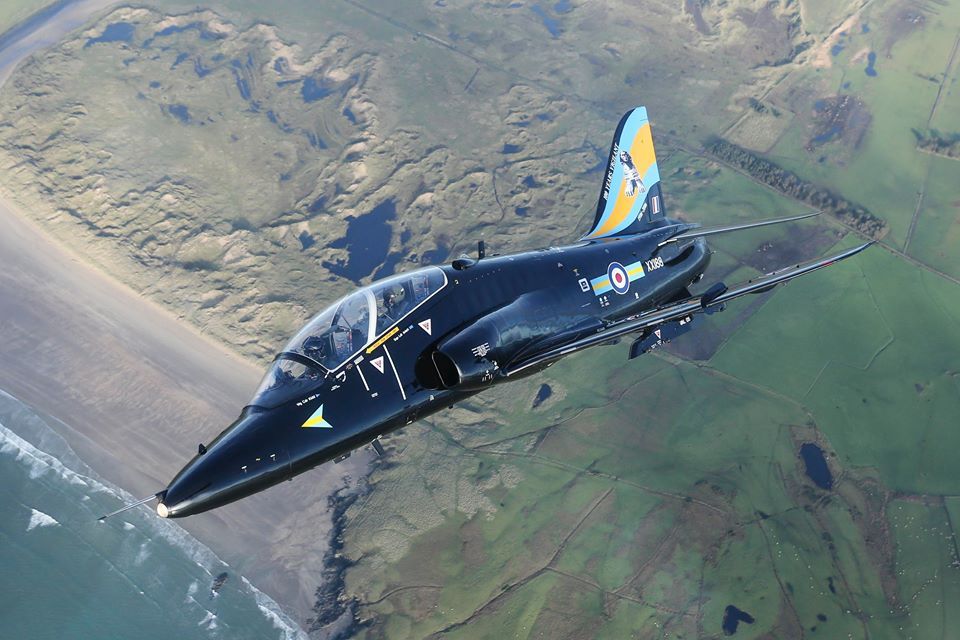
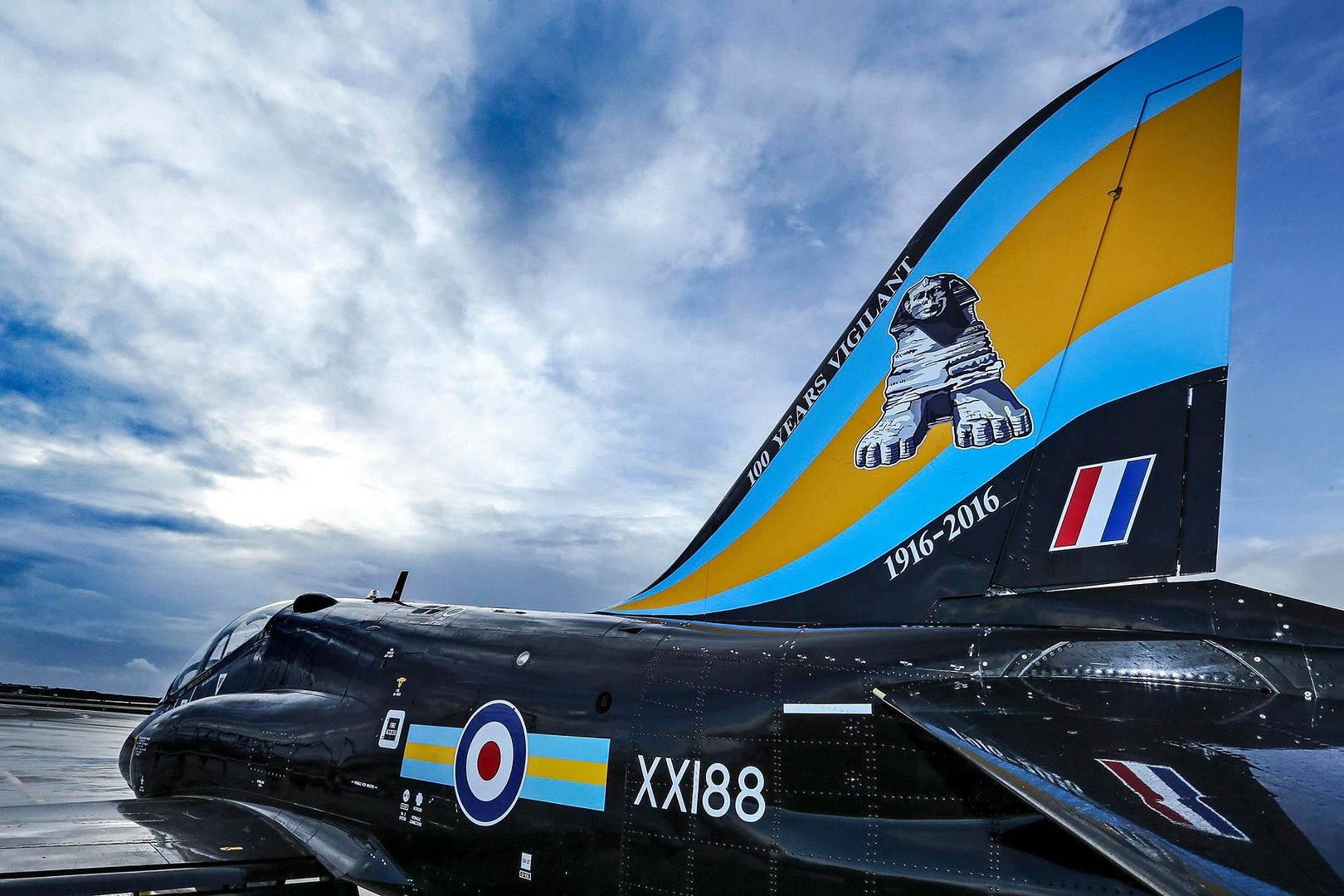
WASHINGTON (AFNS) -- A U.S. B-52 Stratofortress from Andersen Air Force Base, Guam, conducted a low-level flight in the vicinity of Osan Air Base, South Korea, in response to a recent nuclear test by North Korea, according to a U.S. Pacific Command news release issued Jan. 9.
The B-52 was joined by South Korean F-15 fighter aircraft and U.S. F-16 Fighting Falcons, the release said.
"This was a demonstration of the ironclad U.S. commitment to our allies in South Korea, in Japan, and to the defense of the American homeland," said Adm. Harry B. Harris Jr., the PACOM commander. "North Korea's nuclear test is a blatant violation of its international obligations. U.S. joint military forces in the Indo-Asia-Pacific will continue to work with all of our regional allies and partners to maintain stability and security."
The bilateral flight mission demonstrates the strength of the alliance between the U.S. and South Korea and the resolve of both nations to maintain stability and security on the Korean Peninsula, the release said.
Headquartered in Hawaii, PACOM is responsible for all U.S. Air Force, Army, Navy and Marine Corps forces over half the Earth's surface, stretching from the waters off the west coast of North America to the western border of India, and from Antarctica to the North Pole.
The B-52 is a long-range strategic bomber and part of the command's continuous bomber presence in the Indo-Asia-Pacific. Upon completion of the flight over South Korea, the B-52 returned to Guam, the release said.
An F/A-18F Super Hornet from No.1 Squadron and an F/A-18A Hornet from No.75 Squadron in the skies over Iraq.
Australia?s Air Task Group (ATG) as part of Operation OKRA comprises six RAAF F/A-18F Super Hornets, six RAAF F/A-18A Hornets, an E-7A Wedgetail Airborne Early Warning and Control aircraft and a KC-30A Multi-Role Tanker Transport aircraft. During the strike element relief-in-place transition the two F/A-18 Hornet variants were conducting mixed formation combat missions.
BARKSDALE AIR FORCE BASE, La., Jan. 13, 2015 ? Six of the U.S. Air Force?s B-52 bombers can now take flight with a greater variety of weapons, thanks to enhanced internal weapons bay launchers delivered by Boeing [NYSE: BA]. The upgraded launchers allow the B-52 to carry GPS-guided or ?smart? weapons in the weapons bay for the first time and are ready for use.
?The upgrades to the B-52 bomber?s internal weapons bay have made it possible to have zero gap on the bomber?s long-range bombing capabilities as we transfer from Conventional Air Launched Cruise Missiles to Joint Air-to-Surface Standoff Missile ? Extended Range,? said Col. Tim Dickinson, B-52 Program Director with the U.S. Air Force.
The enhancement modifies an existing common strategic rotary launcher in the internal weapons bay into a conventional rotary launcher and increases the total number of smart weapons the B-52 can carry and deliver, giving crew members greater flexibility to adapt to changing conditions on the battlefield.
The launchers, which can be moved from one bomber to another, can carry, target and launch eight Joint Direct Attack Munitions. Future increments of the weapons bay launcher upgrade program will add the capability to carry Joint Air-to-Surface Stand Off Missiles and Miniature Air Launched Decoys.
?With this added capability, the B-52 bomber will remain relevant for decades to come,? said Jeff Lupton, Boeing?s B-52 Internal Weapons Bay Upgrade program manager. ?Our commitment to providing our USAF customer with uncompromising service enabled us to successfully deliver these launchers on an accelerated schedule.?
These deliveries follow several months of successful ground and flight testing of the launchers and support the U.S. Air Force?s accelerated schedule to complete the first stage of the upgrade program ? low rate initial production.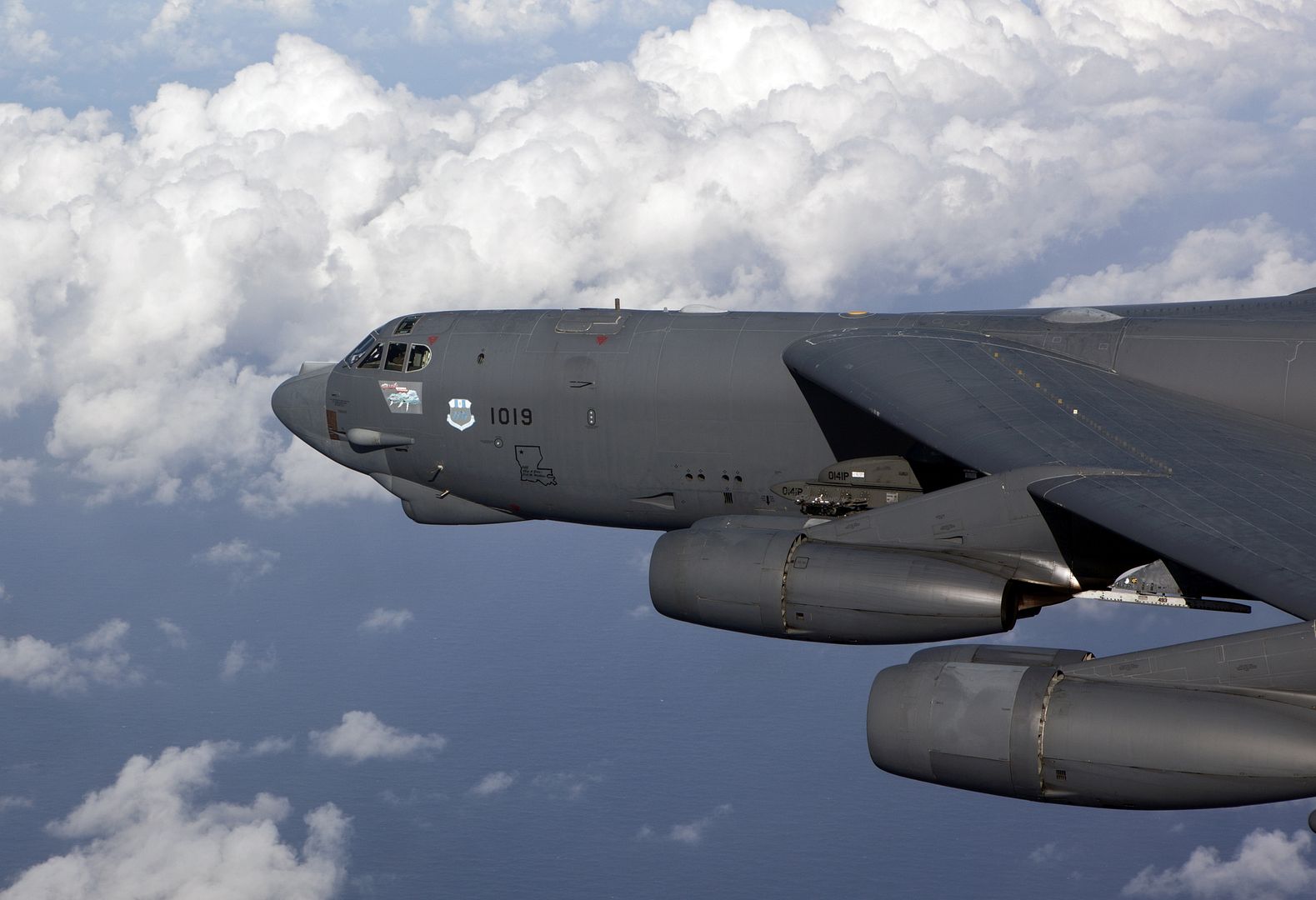
-
 Main AdminUS Navy retires its last S-3B Vikings
Main AdminUS Navy retires its last S-3B Vikings
The last two U.S. Navy S-3B Viking aircraft soar over Laguna Peak at Naval Base Ventura County, Point Mugu, Calif., Dec. 18, 2015. In January, one aircraft left Air Test and Evaluation Squadron 30 and retired to the boneyard; the other went to start a new life with NASA. (U.S. Navy photo by Scott Dworkin)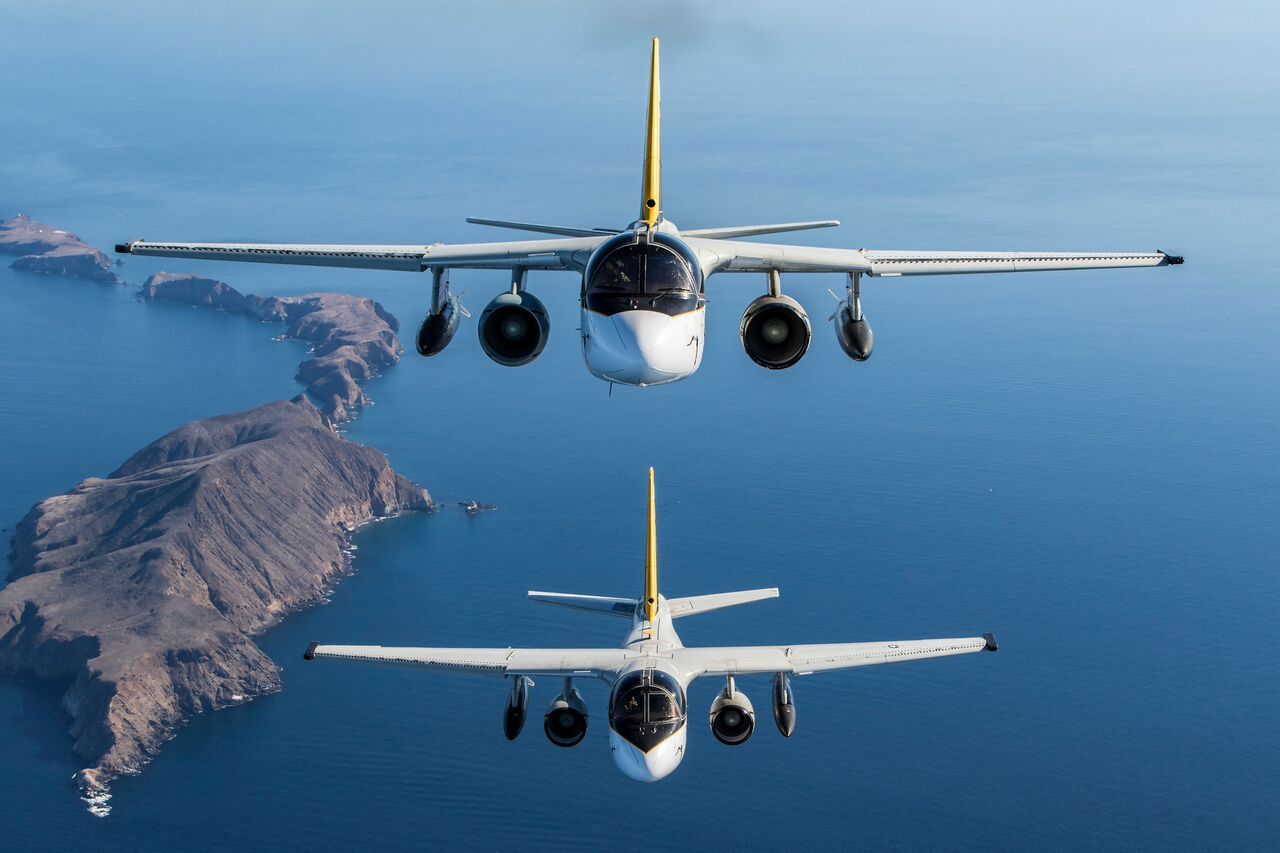
-
9 years agoMon Jan 18 2016, 06:59pm
 Main AdminBy
Main AdminBy
Ahmad Shah Erfanyar
On
Jan 15, 2016 - 17:28
KABUL (Pajhwok): The United States on Friday handed over the Afghan Ministry of Defence (MoD) four A-29 Super Tucano aircraft having the capacity to fire guided rockets.
MoD spokesman Dawlat Waziri told Pajhwok Afghan News the nearly jets aircraft had the capacity to fire heavy and light weapons.
He said the advanced aircraft would help strengthen the Afghan Air Force, adding that the four aircraft were not military helicopters but advanced aircraft which could fire guided and unguided rockets.
The added armour reminds me of B-24's & 190 Sturmbock models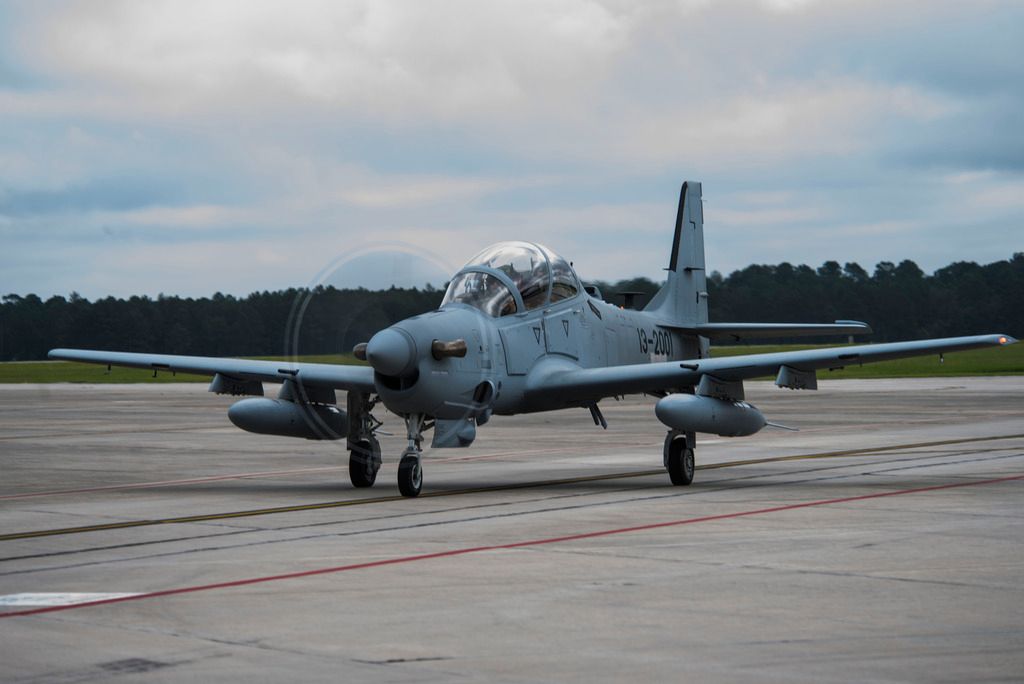
First Lt. Matthew Sanders, 421st Expeditionary Fighter Squadron pilot, launches an F-16 Fighting Falcon for a combat sortie at Bagram Air Field, Afghanistan, Jan. 17, 2016. Airmen assigned to the 421st EFS, known as the ?Black Widows,? are deployed from Hill Air Force Base, Utah, in support of Operation Freedom?s Sentinel and NATO?s Resolute Support mission. (U.S. Air Force photo/Capt. Bryan Bouchard)
-
 Main AdminThe sun rises over the Chugach Mountains with view of the Heritage Park at Joint Base Elmendorf-Richardson, Alaska, Jan. 19, 2016. During January, Alaska has been steadily gaining an average of six hours of daylight. (U.S. Air Force photo by Staff Sgt. Sheila deVera)
Main AdminThe sun rises over the Chugach Mountains with view of the Heritage Park at Joint Base Elmendorf-Richardson, Alaska, Jan. 19, 2016. During January, Alaska has been steadily gaining an average of six hours of daylight. (U.S. Air Force photo by Staff Sgt. Sheila deVera)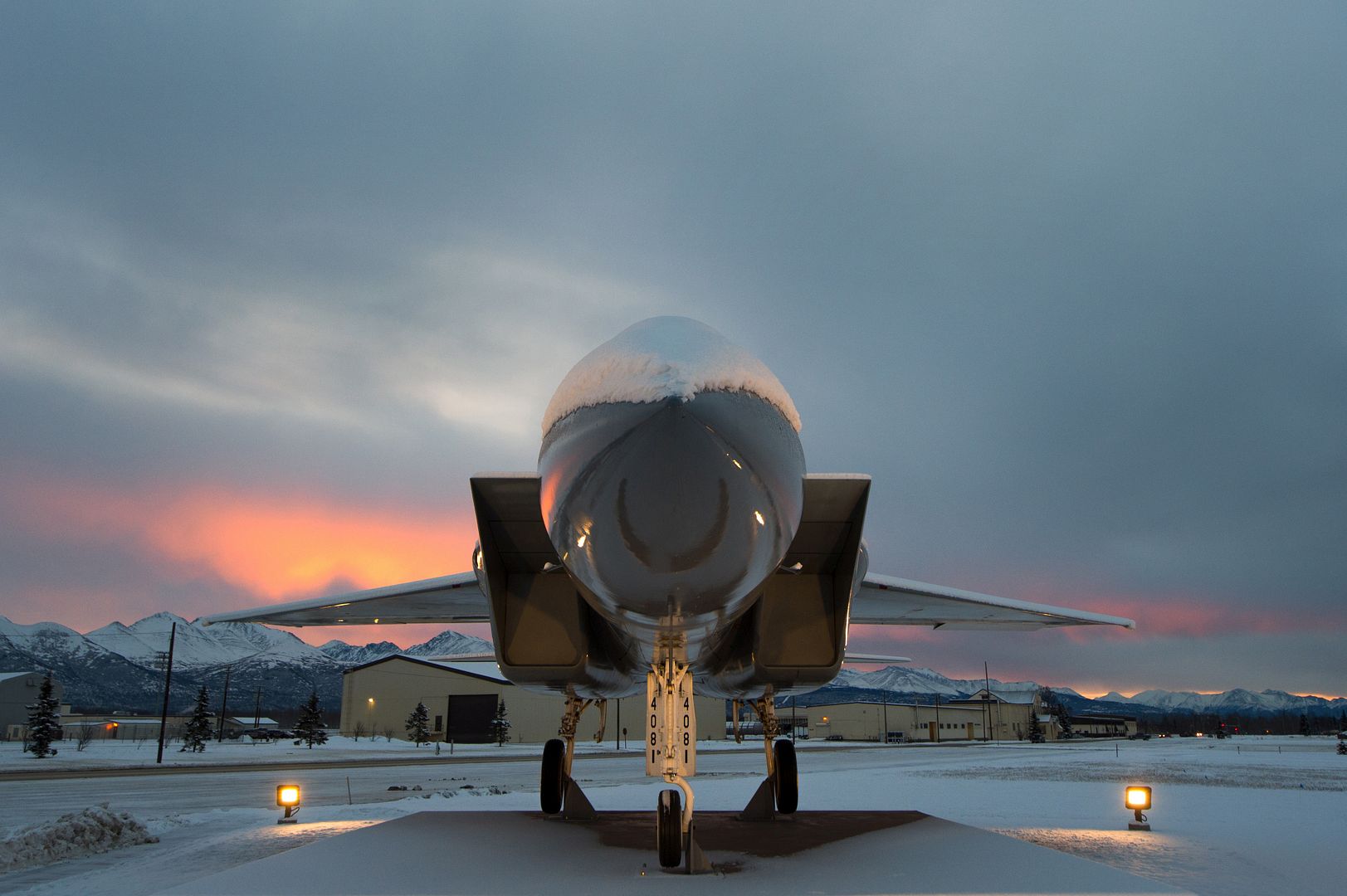
Held at Nellis Air Force Base in Nevada from January 19 until February 13, Exercise Red Flag 16-1 will involve 6 F/A-18F Super Hornet aircraft from RAAF Base Amberley, 6 F/A-18 A/B Hornet aircraft from RAAF Base Tindal; a single AP-3C Orion from RAAF Base Edinburgh, and an E-7A Wedgetail AEW&C from RAAF Base Williamtown. It will also include an Air Battle Management contingent from No 41 Wing, conducting surveillance and battlespace management of coalition forces inside the exercise area.
Officer Commanding No. 81 Wing and Exercise Director, Group Captain Phil Gordon, highlighted the importance of Exercise Red Flag for Air Force and its personnel.
?Exercise Red Flag involves a series of air combat scenarios that test operational air and ground crews to the highest level. For members of RAAF, this exercise is the culmination of years of training; it is incredibly challenging and the ultimate test of coalition interoperability.?
There are very few training environments in the world that recreate the complexity and dangers of a modern battlespace like Exercise Red Flag.
?Day and night-time missions at Red Flag will require large numbers of aircraft to work together to complete the assigned missions across a variety of roles. The threats they face range from aggressor F-15 and F-16 fighters and simulated surface to air missile engagements, through to electronic warfare and cyberspace attacks?, Group Captain Gordon said.
?It provides the ultimate environment in which our Air Force personnel can showcase their extraordinary abilities in a deployed scenario.?
From RAAF Base Edinburgh?s No. 10 Squadron, Wing Commander Jason Begley will lead the AP-3C Orion Detachment in conducting overland surveillance in the exercise area.
?The Orion, together with the Wedgetail AEW&C will help build ?the big picture? of what?s happening on the ground and in the air within the exercise area at Exercise Red Flag,? Wing Commander Begley said.
?We?re coming to this exercise with considerable experience in this role, especially from Operation Slipper over Afghanistan, where we regularly provided support to combat personnel on the ground. The scale and complexity of Exercise Red Flag makes it quite unique, so we stand to gain a lot of experience in working with allied partners.?
Exercise Red Flag will conclude on 13 February 2016.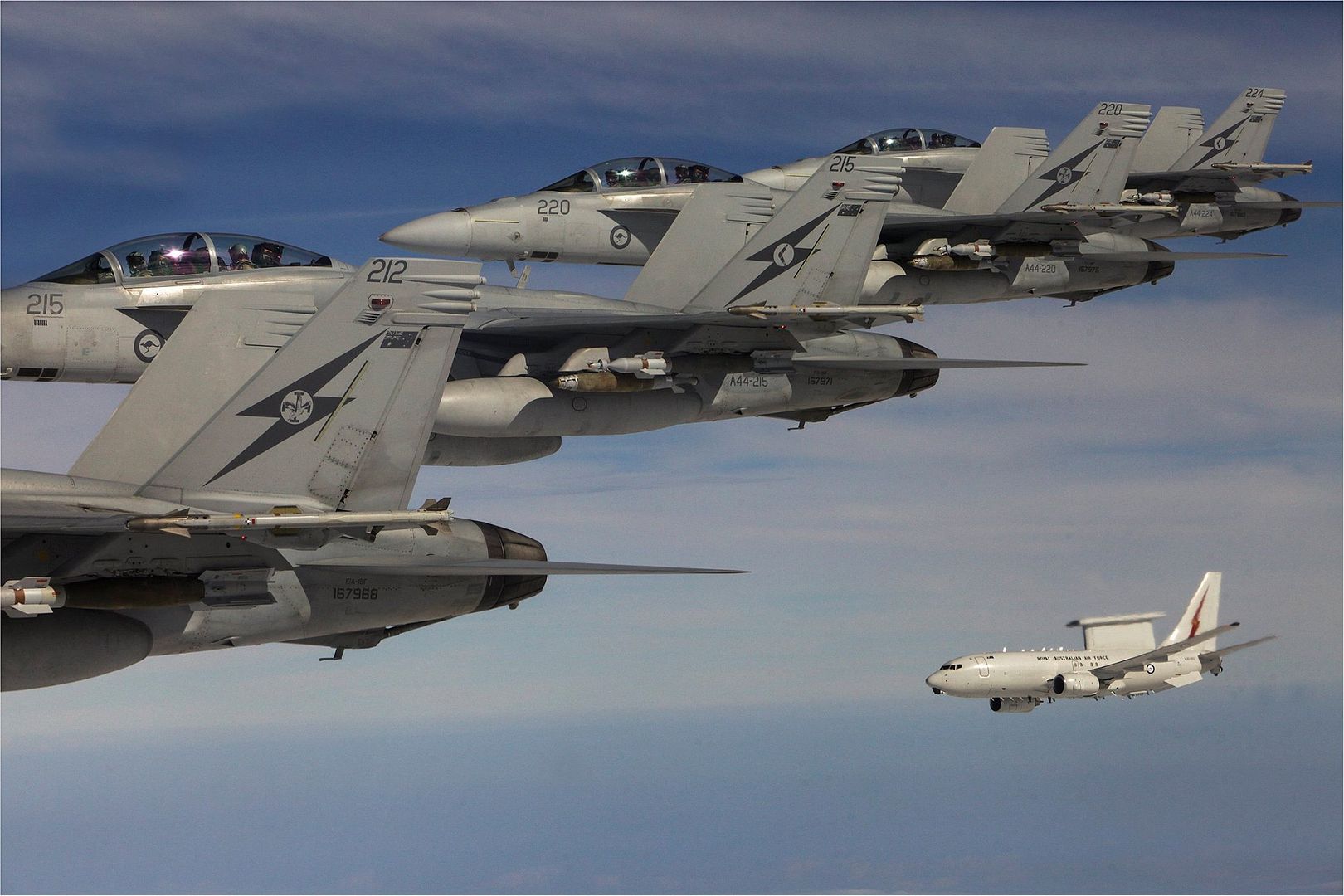
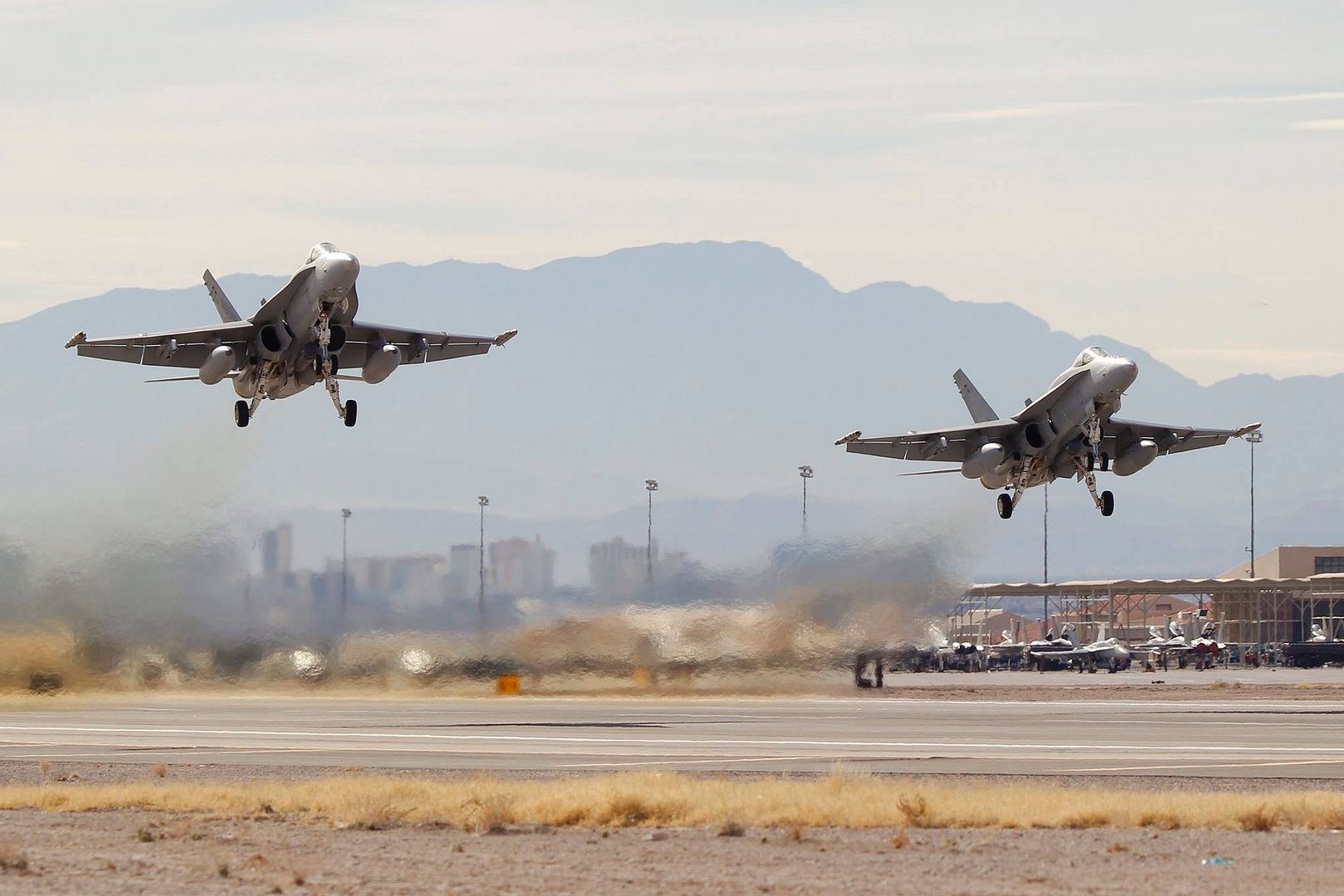
-
 Main Admin20 January 2016 Press Release
Main Admin20 January 2016 Press Release
The Lufthansa Group, Airbus? largest airline customer and operator, marks a major step in aviation history today by taking delivery of the first A320neo, the world?s best-selling and most fuel efficient single aisle aircraft.
Equipped with all new technology Pratt & Whitney PurePower? Geared Turbofan? engines, the A320neo sets a new, even higher standard in aircraft efficiency, reducing emissions and noise as well as burning 15% less fuel than current generation aircraft from day one and 20% less by 2020.
?We are happy that today we are the first airline worldwide to receive the Airbus A320neo. Featuring the leading technology of Airbus and Pratt & Whitney, the A320neo is by far the most efficient and most silent aircraft on short- and medium-haul routes.
With lower fuel consumption and consequently lower CO2 emissions, the A320neo has a clearly improved environmental performance. Furthermore, the new jet engine technology makes the aircraft considerably quieter. As a result, we have ordered a total of 116 aircraft of this type for the airlines of the Lufthansa Group?, states Carsten Spohr, Chairman of the Executive Board and CEO of Deutsche Lufthansa AG.
?Today we prove once again that as an aviation company and airline group we are pioneers in the development and introduction of technical innovations. In this year alone the Lufthansa Group will receive a total of 52 new aircraft, a number we have not received in years?, says Spohr.
?Pratt & Whitney congratulates Lufthansa as the launch customer for the A320neo aircraft powered by PW1100G-JM engines,? said Robert Leduc, Pratt & Whitney President.. ?Airbus and Lufthansa have been important customers for Pratt & Whitney for many years. With the A320neo?s unprecedented reductions in fuel burn, emissions and noise, I am confident that these business relationships will have continued success for many years to come.?
?Handing over the first A320neo to a world?s leading airline and long standing Airbus customer, Lufthansa, is a truly great day for everyone at Airbus,? said Fabrice Br?gier, Airbus President and CEO. ?This occasion marks a new step forward to delivering on our promises and meeting our industry?s goal for sustainable aviation. The A320neo embodies Airbus? passion and commitment to deliver maximum value and efficiency to our customers through continuous innovations.?
The A320neo Family incorporates the very latest technologies including new generation engines and Sharklet wing tip devices. With almost 4,500 orders received from nearly 80 customers since its launch in 2010, the A320neo Family has captured some 60 percent share of the market.
Last year Lufthansa celebrated its 60th anniversary since it started operations in 1955. In this period, Lufthansa Group?s Airbus orders have reached a combined total of 582 aircraft including 386 A320 Family, of which 116 are NEOs (71 A320neo and 45 A321neo). The full range of Airbus wide-body aircraft have been or will be a part of Lufthansa?s fleet from the innovative A300/A310 to the iconic A380 (14 in service), the versatile A330 to the modern and extra-comfortable A350 XWB (25 firm orders).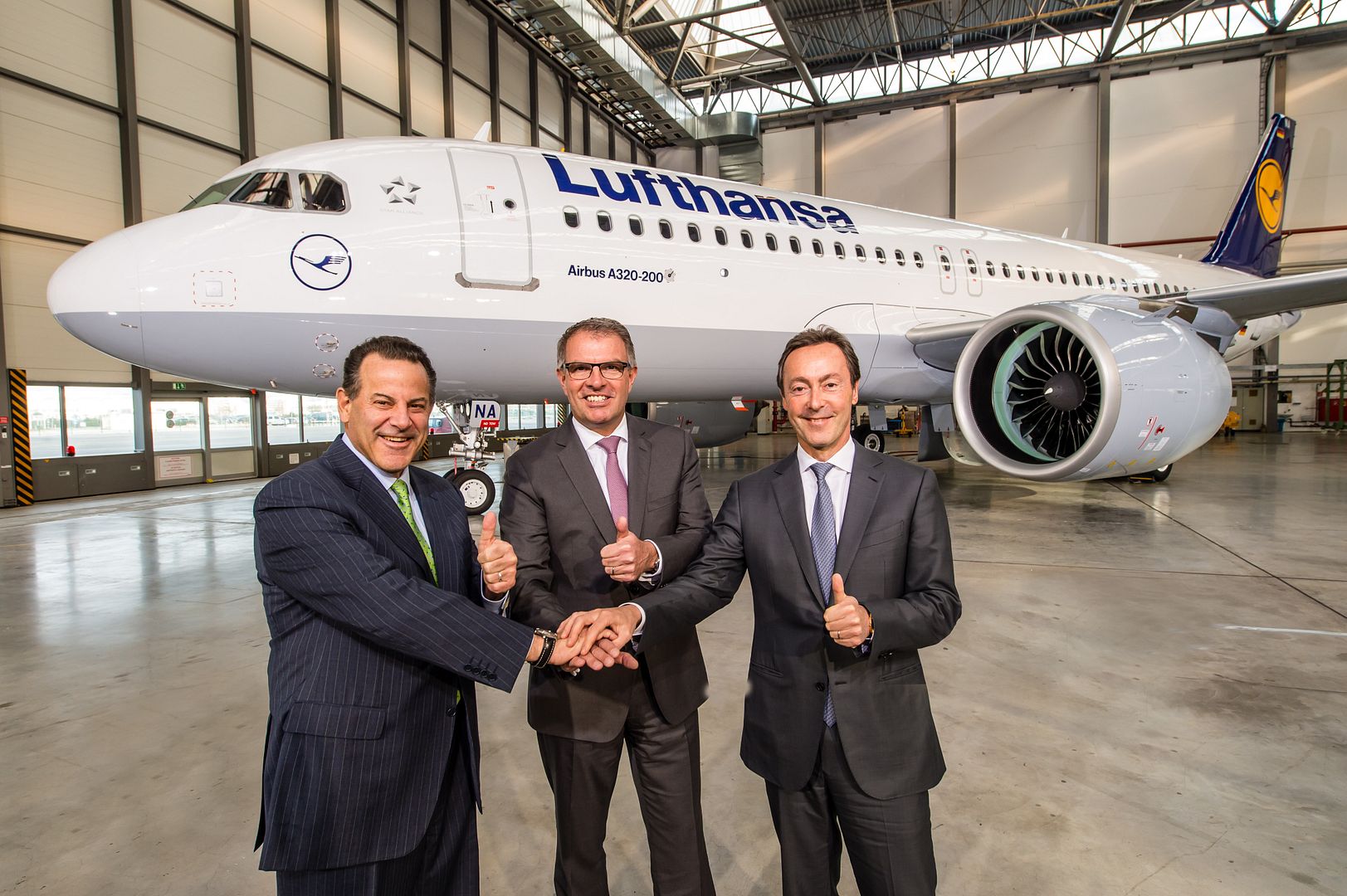
-
 Main AdminEDWARDS AIR FORCE BASE, Calif. (AFNS) -- An F-35 fighter jet from the 461st Flight Test Squadron launched an AIM-9X missile for the first time over the Pacific Sea Test Range Jan. 12.
Main AdminEDWARDS AIR FORCE BASE, Calif. (AFNS) -- An F-35 fighter jet from the 461st Flight Test Squadron launched an AIM-9X missile for the first time over the Pacific Sea Test Range Jan. 12.
The flight sciences aircraft, AF-1, of the Joint Strike Fighter Integrated Test Force, was piloted by David Nelson, the Lockheed Martin chief F-35 test pilot at Edwards Air Force Base.
The AIM-9X is an advanced infrared missile and the newest of the Sidewinder family of short-range air-to-air missiles carried on a wide range of fighter jets.
The missile was launched at 6,000 feet.
The shot paves the way for the F-35 to utilize the weapon's high off-boresight and targeting capabilities, increasing lethality in the visual arena.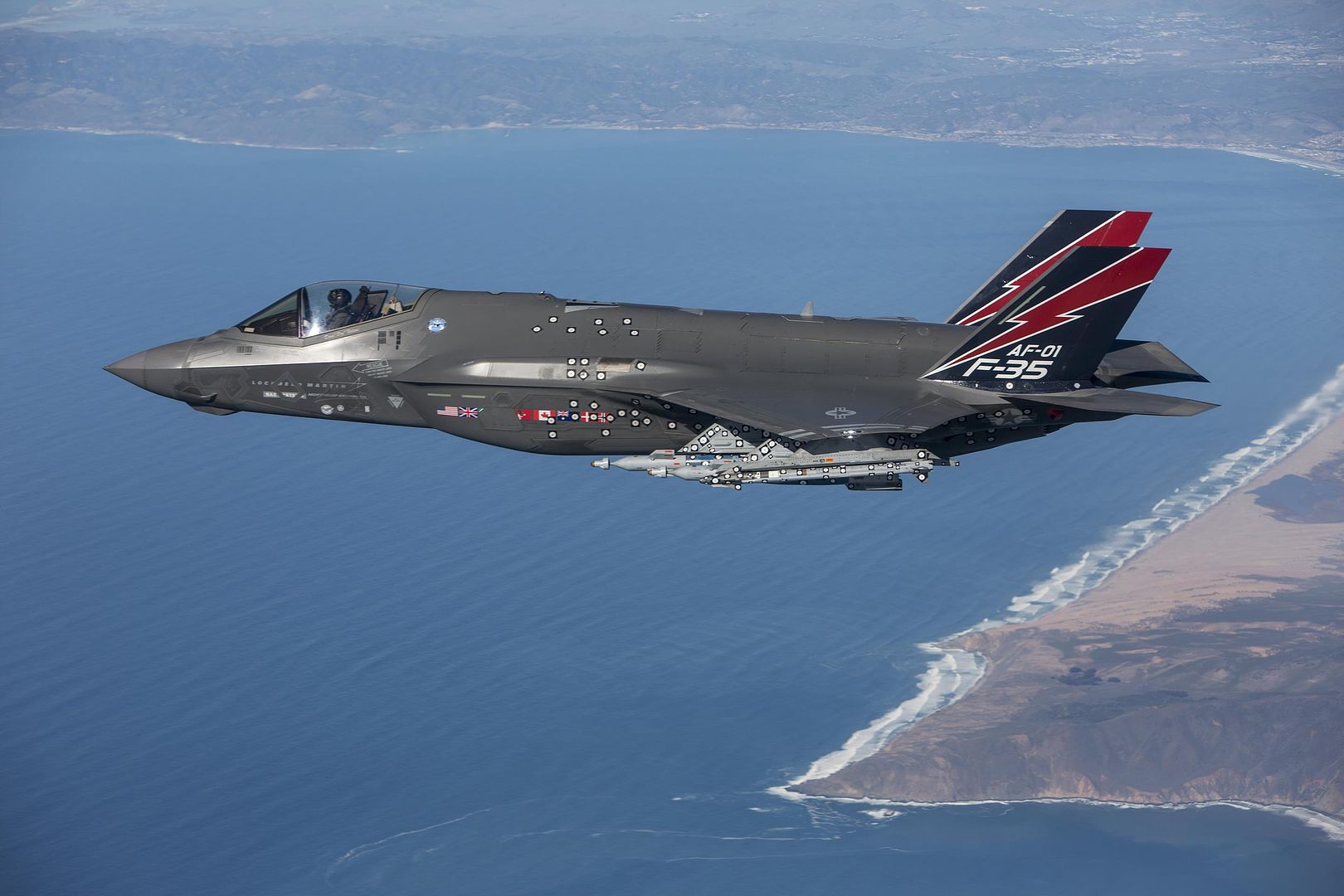
21 January 2016 Press Release
As part of its fleet renewal strategy, Gulf Air has announced a firm order of 29 A320neo Family. The new order includes 17 A321neo and 12 A320neo of which 10 A320neo have been confirmed in 2012. The contract was signed today at the Bahrain International Airshow between Mr. Maher Salman Al Musallam, A/Chief Executive Officer, Gulf Air and Fabrice Br?gier, Airbus President and Chief Executive Officer, in the presence of H.E. Kamal bin Ahmed Mohammed, Minister of Transportation and Telecommunications, Kingdom of Bahrain and Mr Matthias Fekl, Minister of State for Foreign Trade, the Promotion of Tourism and French Nationals Abroad.
Gulf Air currently operates 28 Airbus aircraft; and the new aircraft will fit seamlessly into the airline?s current fleet, thanks to Airbus? overall fleet commonality, its low operating costs, optimum fuel efficiency and best-in-class passenger comfort of any single aisle aircraft.
Commenting on the agreement, Gulf Air A/Chief Executive Officer Mr. Maher Salman Al Musallam, said, ?I am delighted that we will enhance and simplify our fleet structure building on Airbus aircraft. This restructured order meets Gulf Air?s future fleet requirement and our network expansion plans. As a result, I now look forward to furthering Gulf Air?s fleet modernization process while supporting our network and overall passenger experience enhancement strategies.?
?We are pleased that Gulf Air has chosen the A320neo Family to complement its long-term growth strategy. The fuel efficient aircraft will provide the airline with a higher operational efficiency and profitability while its wider cabins will open a new dimension of passenger appeal,? said Fabrice Br?gier, Airbus President and Chief Executive Officer.
The A320neo Family incorporates latest technologies including new generation engines and Sharklet wing tip devices, which together deliver more than 15 percent in fuel savings from day one and 20 percent by 2020 with further cabin innovations. With nearly 4,500 orders received from some 80 customers since its launch in 2010, the A320neo Family has captured a 60 percent share of the market.
-
 Main AdminPACIFIC OCEAN (Jan. 22, 2016) - An F/A-18F Super Hornet assigned to the Black Aces of Strike Fighter Squadron (VFA) 41 lands on USS John C. Stennis' (CVN 74) flight deck. Providing a combat-ready force to protect collective maritime interests, Stennis is operating as part of the Great Green Fleet in the U.S. 3rd Fleet area of operations on a regularly scheduled Western Pacific deployment. (U.S. Navy photo by Mass Communication Specialist Seaman Dakota Rayburn / Released)
Main AdminPACIFIC OCEAN (Jan. 22, 2016) - An F/A-18F Super Hornet assigned to the Black Aces of Strike Fighter Squadron (VFA) 41 lands on USS John C. Stennis' (CVN 74) flight deck. Providing a combat-ready force to protect collective maritime interests, Stennis is operating as part of the Great Green Fleet in the U.S. 3rd Fleet area of operations on a regularly scheduled Western Pacific deployment. (U.S. Navy photo by Mass Communication Specialist Seaman Dakota Rayburn / Released)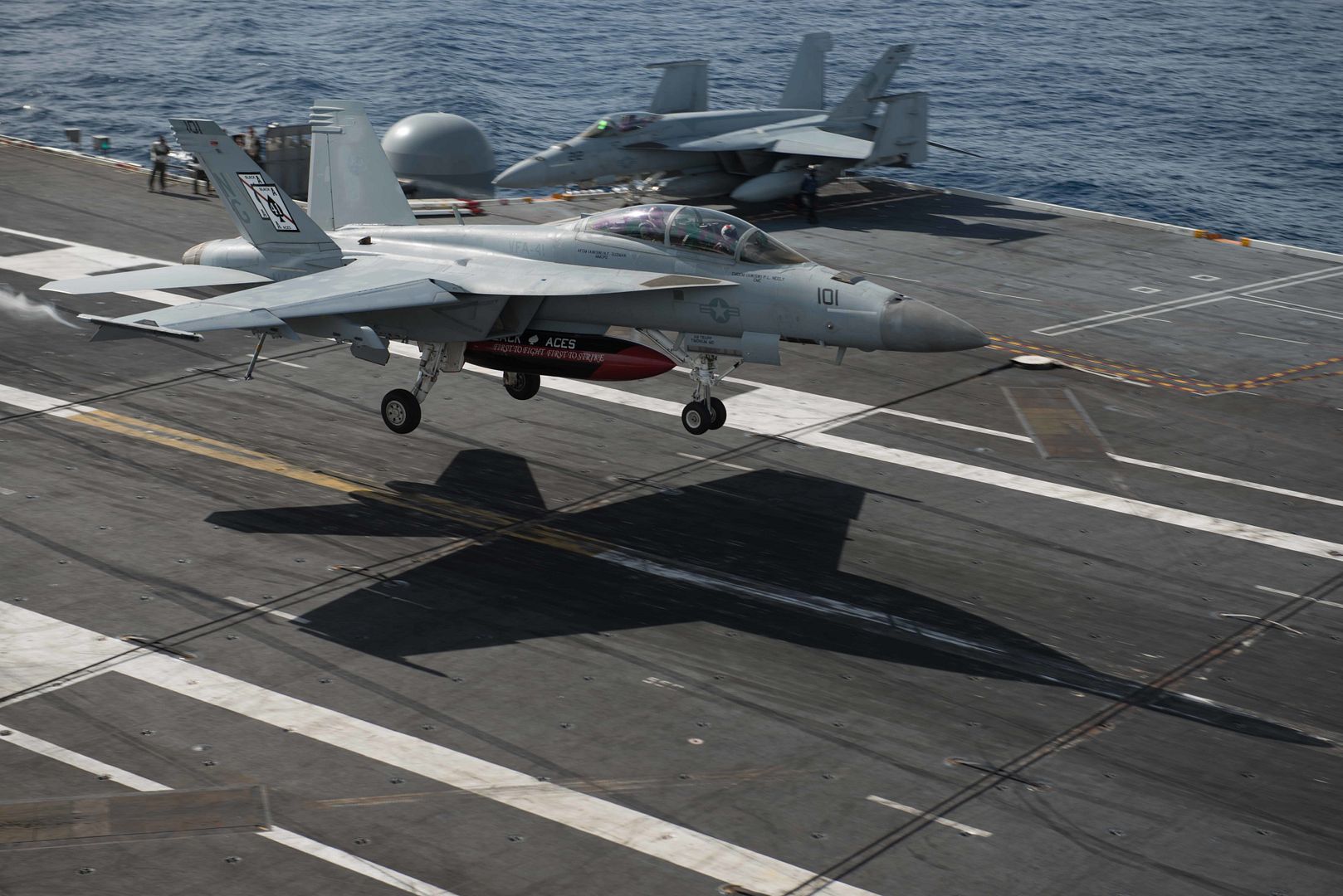
An Mirage performs at the Bahrain International Airshow at Sakhir Airbase in Manama, Bahrain, Jan. 22, 2016. (U.S. Air Force photo by Staff Sgt. Corey Hook/Released)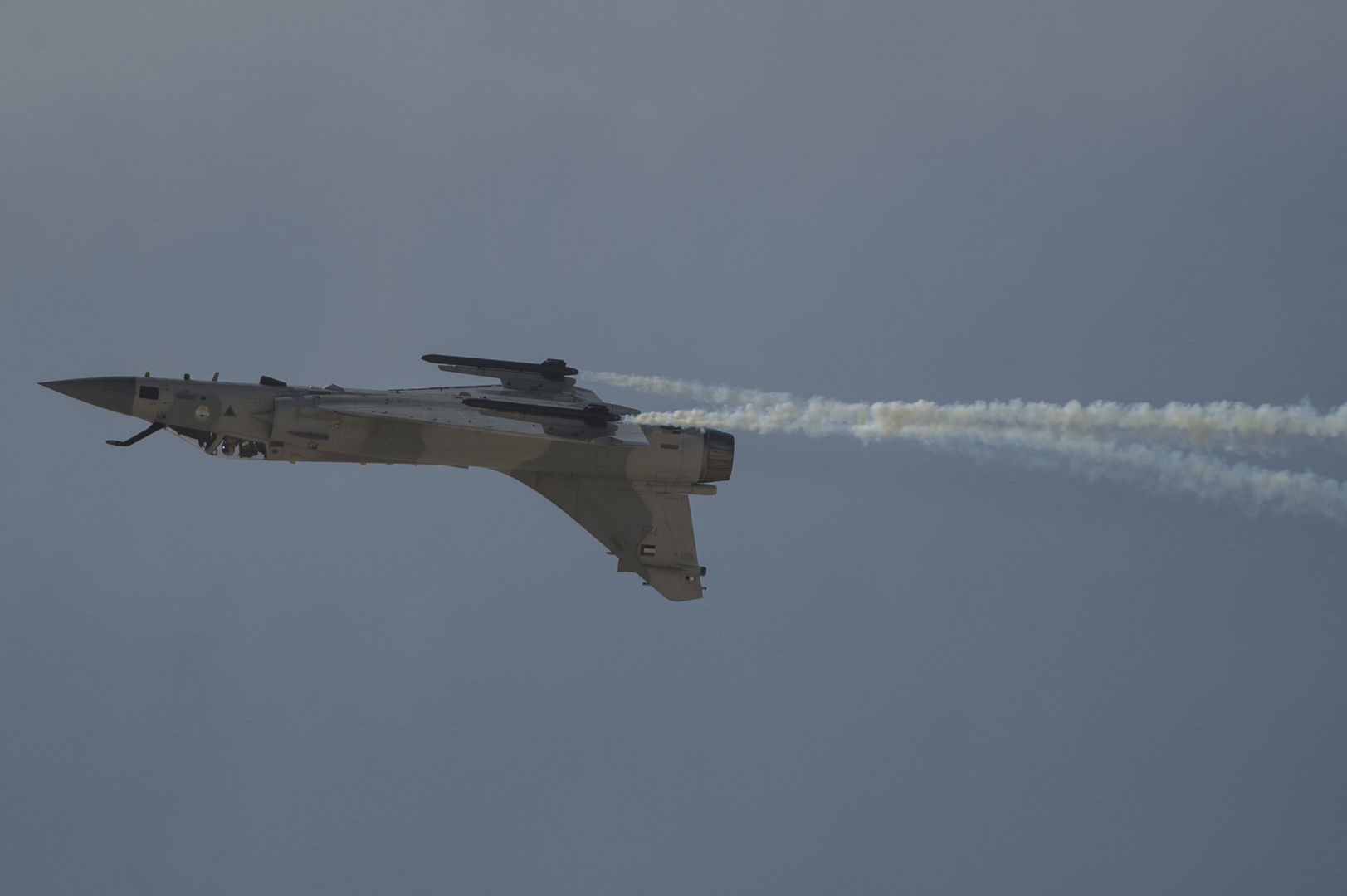
An F-16 performs at the Bahrain International Airshow at Sakhir Airbase in Manama, Bahrain, Jan. 22, 2016. (U.S. Air Force photo by Staff Sgt. Corey Hook/Released)
SEATTLE, Jan. 24, 2016 ? Boeing [NYSE: BA] and U.S. Air Force aircrews successfully completed the KC-46A tanker?s first refueling flight today in the skies above Washington state.
Following takeoff from Boeing Field in Seattle, the KC-46A test team worked through a series of test points before smoothly offloading 1,600 pounds of fuel to an F-16 fighter aircraft flying at 20,000 feet.
?Today?s flight is an important milestone for the Air Force/Boeing team because it kicks off the Milestone C aerial refueling demonstration, which is the prerequisite for the low-rate initial production decision,? said Col. Christopher Coombs, U.S. Air Force KC-46 system program manager. ?We have a lot of work yet to do, but this is an exciting time for the airmen who are preparing to fly, maintain and support the KC-46 Pegasus for decades to come.?
During the 5 hour and 43-minute flight, both Boeing and Air Force air refueling operators accomplished multiple contacts with the F-16 that confirmed the system was ready to transfer fuel. Master Sgt Lindsay Moon, U.S. Air Force KC-46 air refueling operator, then ?flew? the tanker?s 56-foot boom downward and waited for the F-16 to move into position before fully extending the boom into its refueling receptacle. The KC-46 offloaded fuel to the fighter and when the fuel transfer was complete, the system automatically turned off the pumps and Moon smoothly retracted the boom.The refueling boom?s handling qualities throughout the flight were exceptional,? said Rickey Kahler, Boeing KC-46 air refueling operator who also guided the boom during contacts with the F-16 while sitting in the tanker?s state-of-the-art refueling operator station in the front of the tanker. ?The boom was extremely stable ? it handled like it was an extension of my arm.?
The KC-46A that accomplished today?s refueling milestone will soon begin refueling a number of other military aircraft as well, including a C-17, F/A-18, A-10 and AV-8B. Also known as EMD-2, the tanker made its first flight September 25, 2015 and has now completed 32 flights.
The program?s first test aircraft (EMD-1), a 767-2C, has completed more than 260 flight test hours to date since its first flight in December 2014. EMD-3 and EMD-4 will begin flight testing later this year.
As part of a contract awarded in 2011 to design and develop the U.S. Air Force?s next-generation tanker aircraft, Boeing is building four test aircraft ? two are currently configured as 767-2Cs and two as KC-46A tankers.
The KC-46A is a multirole tanker Boeing is building for the U.S. Air Force that can refuel all allied and coalition military aircraft compatible with international aerial refueling procedures and can carry passengers, cargo and patients. Overall, Boeing plans to build 179 KC-46 aircraft for the U.S. Air Force.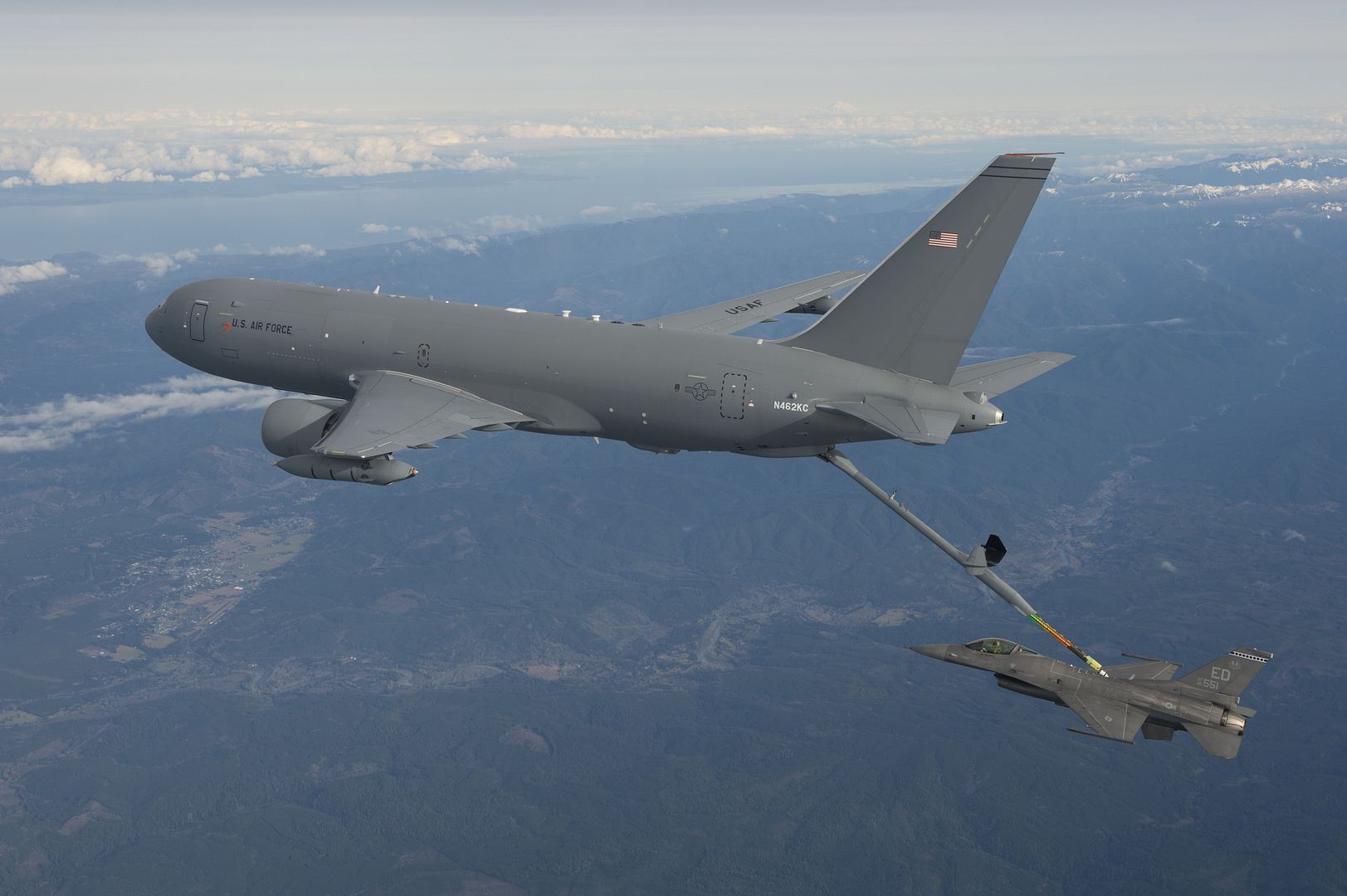
-
 Main AdminA C-17A Globemaster III aircraft are framed by a snowbank following Winter Storm Jonas Jan. 25, 2016, at Dover Air Force Base, Del. The two aircraft in the foreground are from the 436th Airlift Wing, Dover AFB, while the third is based at Joint Base McGuire-Dix-Lakehurst, N.J., as part of the 305th Air Mobility Wing. Despite the 22 inches of snow dumped on the base, the runway and flight lines were cleared to allow the base to resume normal flight operations within hours of the duty day beginning. (U.S. Air Force photo/Greg L. Davis)
Main AdminA C-17A Globemaster III aircraft are framed by a snowbank following Winter Storm Jonas Jan. 25, 2016, at Dover Air Force Base, Del. The two aircraft in the foreground are from the 436th Airlift Wing, Dover AFB, while the third is based at Joint Base McGuire-Dix-Lakehurst, N.J., as part of the 305th Air Mobility Wing. Despite the 22 inches of snow dumped on the base, the runway and flight lines were cleared to allow the base to resume normal flight operations within hours of the duty day beginning. (U.S. Air Force photo/Greg L. Davis)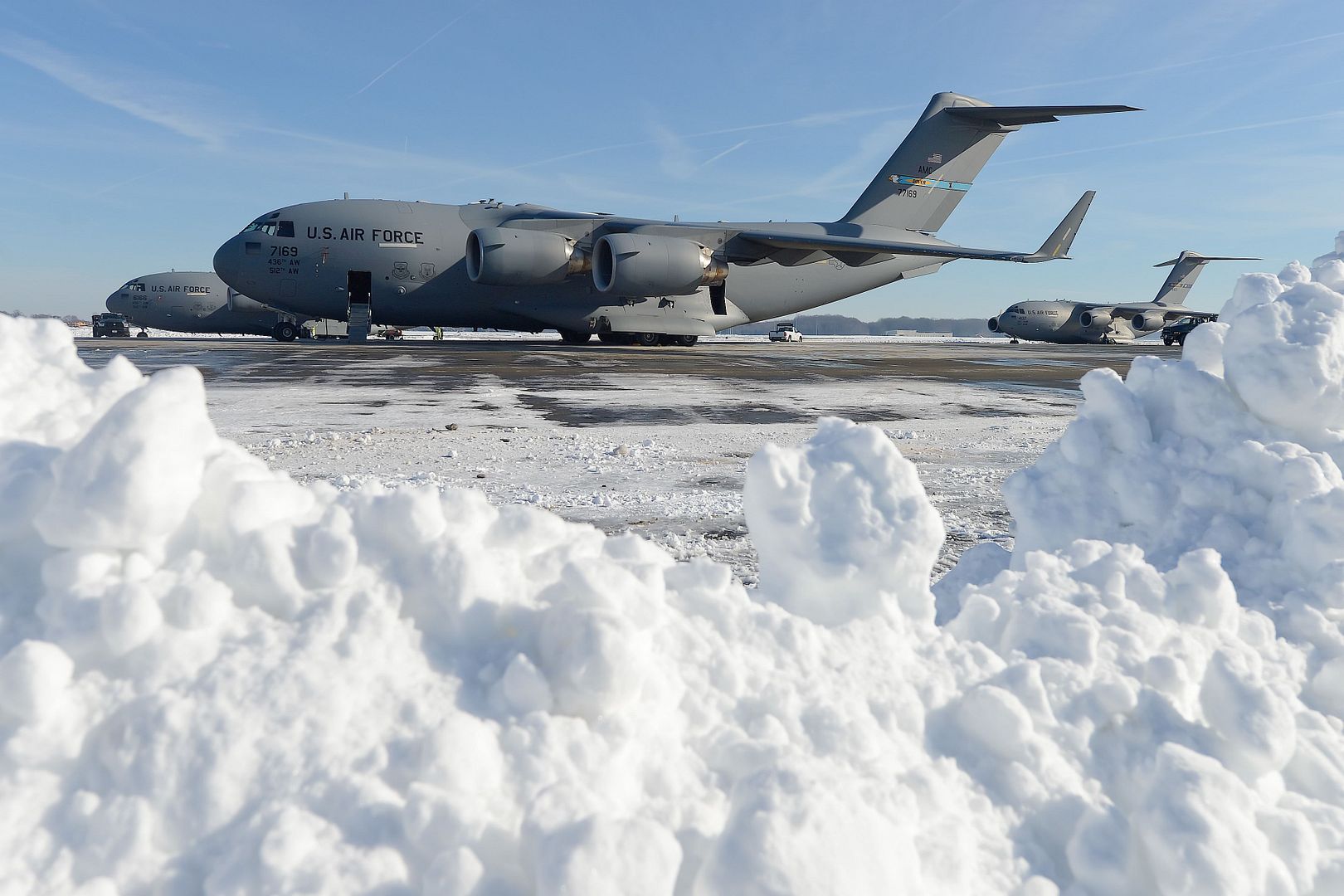
-
9 years agoWed Jan 27 2016, 02:30pm
 Main AdminAn RC-135V/W Rivet Joint reconnaissance aircraft approaches a KC-135 Stratotanker for aerial refueling training, Jan. 26, 2016, over Nebraska. These aircraft support theater and national level consumers with near real time on-scene intelligence collection, analysis and dissemination capabilities. (U.S. Air Force photo/Senior Airman David Bernal Del Agua)
Main AdminAn RC-135V/W Rivet Joint reconnaissance aircraft approaches a KC-135 Stratotanker for aerial refueling training, Jan. 26, 2016, over Nebraska. These aircraft support theater and national level consumers with near real time on-scene intelligence collection, analysis and dissemination capabilities. (U.S. Air Force photo/Senior Airman David Bernal Del Agua)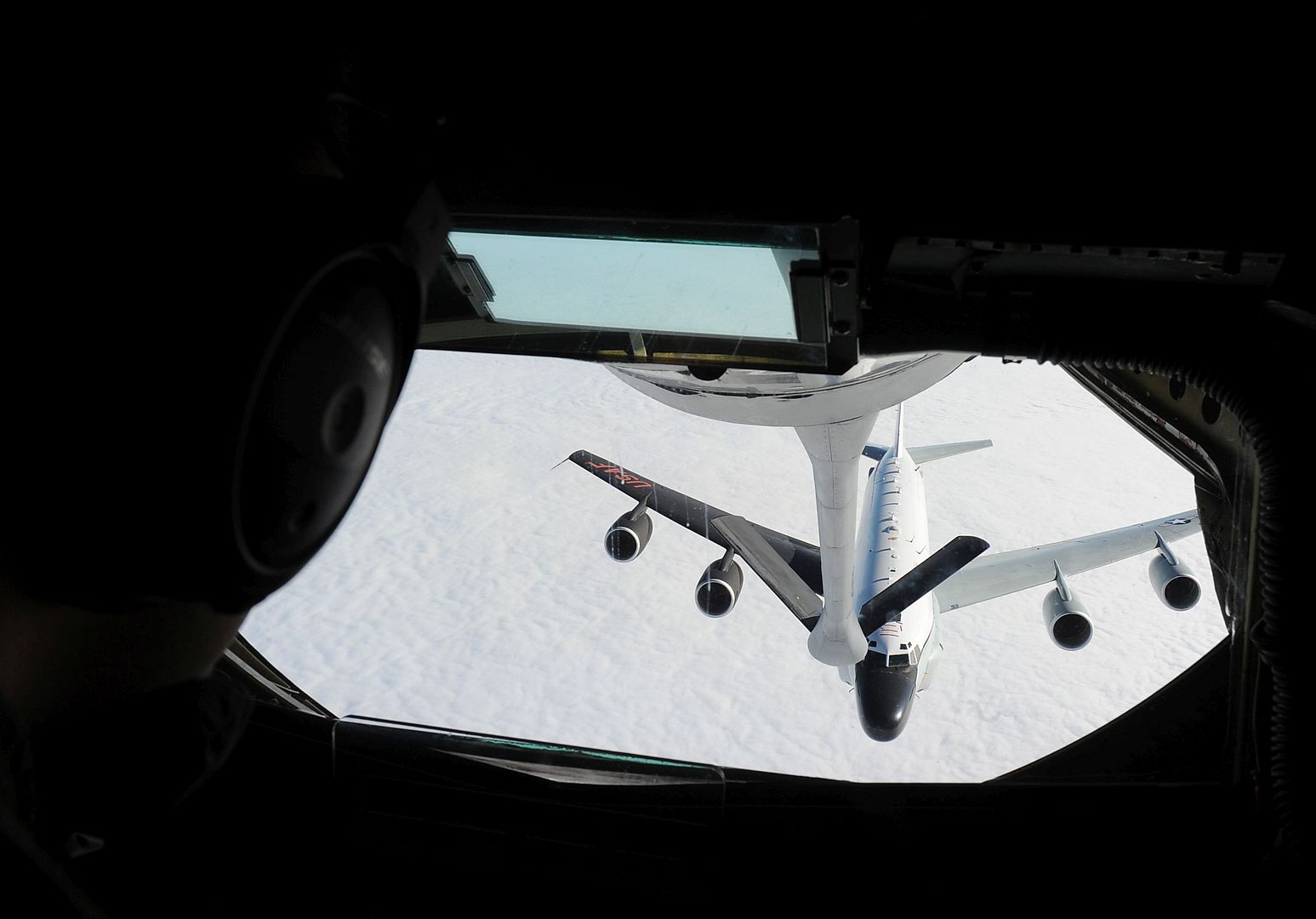
Tokyo (AFP) - More than 70 years after striking fear into the hearts of Allied pilots, a restored Zero fighter took to the skies in southern Japan on Wednesday.
Japan's most famous World War II fighter aircraft was developed by Mitsubishi Heavy Industries and was noted for its technological advancement.
The legendary planes took part in the Japanese attack on Pearl Harbor while "kamikaze" suicide pilots crashed them into US ships in the later stages of the war.
The restored plane took off from a Japanese military base on the island of Kyushu for two short flights, the Nikkan Sports newspaper reported.
The aircraft, painted dark green with round bright red "circle of the sun" symbols on its body and wings, was airborne for six minutes and 16 minutes, respectively, the report said.
The plane was found in 1970 in Papua New Guinea -- the scene of fierce fighting during World War II -- and restored, ending up in the United States before being brought to Japan in parts in 2014, the report said.
Other restored fighters have been flown over the country, but the Chunichi Shimbun daily reported that the flight Wednesday marked the first time since the end of the war that a Japanese-owned Zero took to the skies in Japan.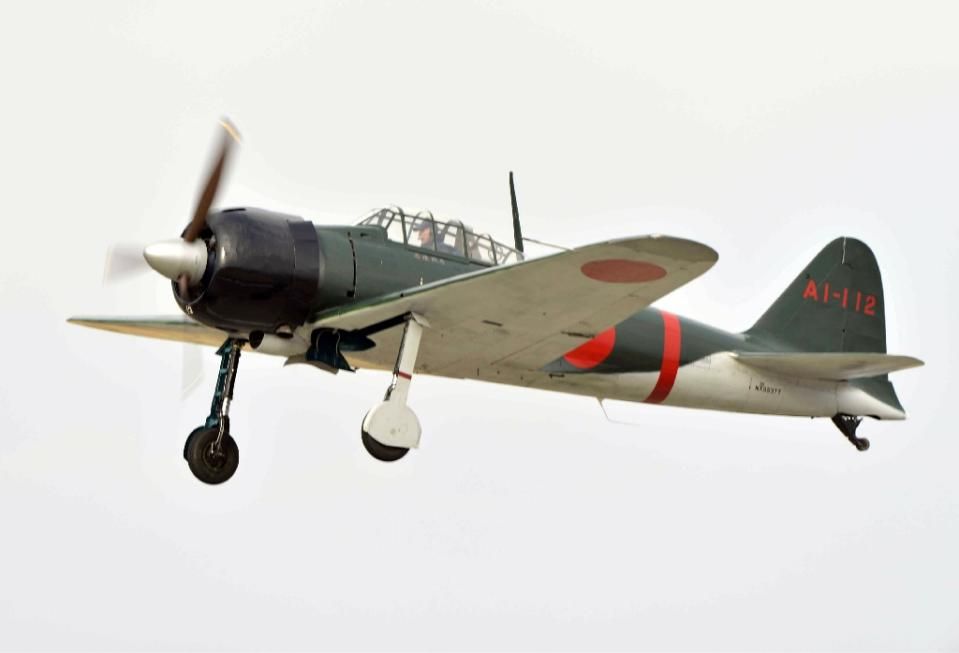
Post a reply
- Go to Previous topic
- Go to Next topic
- Go to Welcome
- Go to Introduce Yourself
- Go to General Discussion
- Go to Screenshots, Images and Videos
- Go to Off topic
- Go to Works in Progress
- Go to Skinning Tips / Tutorials
- Go to Skin Requests
- Go to IJAAF Library
- Go to Luftwaffe Library
- Go to RAF Library
- Go to USAAF / USN Library
- Go to Misc Library
- Go to The Ops Room
- Go to Made in Germany
- Go to Campaigns and Missions
- Go to Works in Progress
- Go to Juri's Air-Raid Shelter
- Go to Campaigns and Missions
- Go to Works in Progress
- Go to Skinpacks
- Go to External Projects Discussion
- Go to Books & Resources
